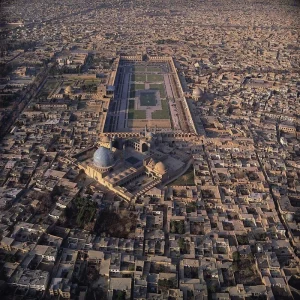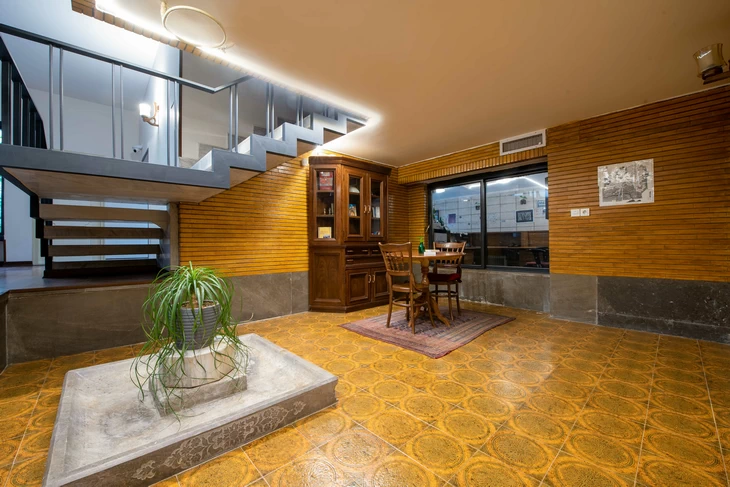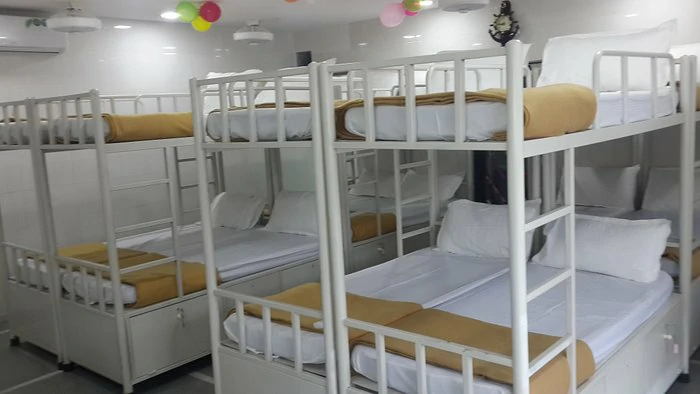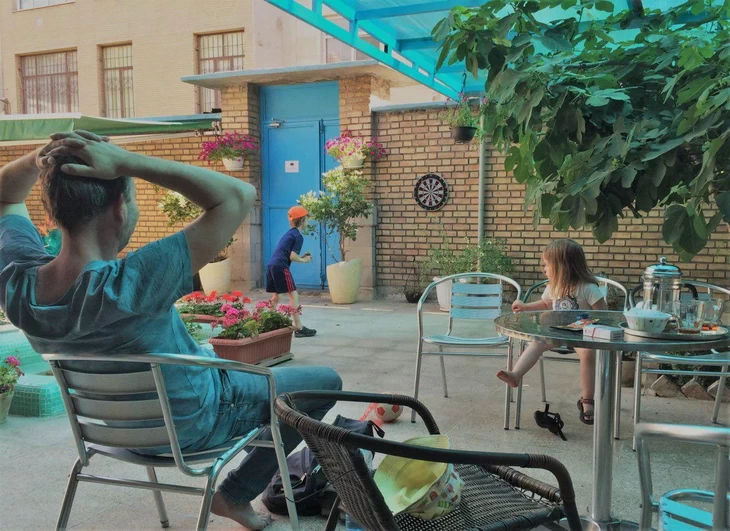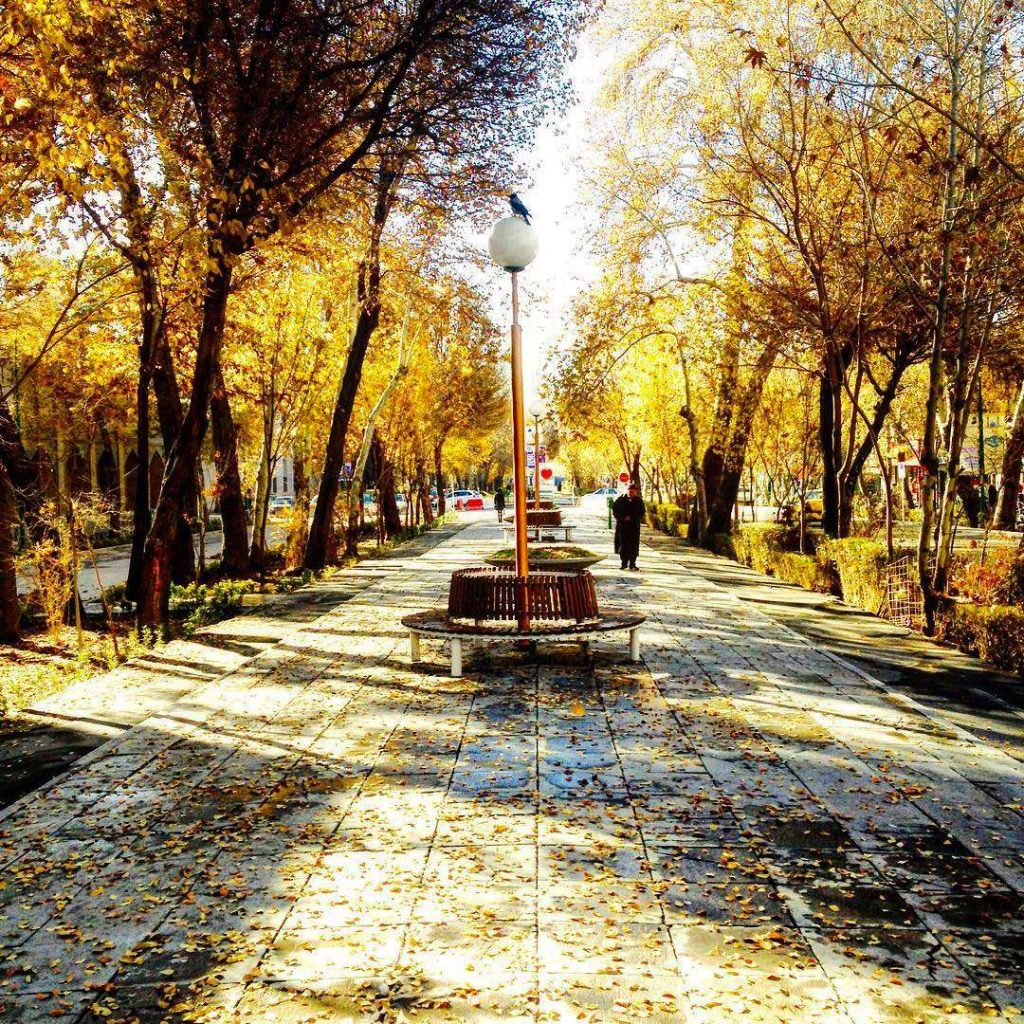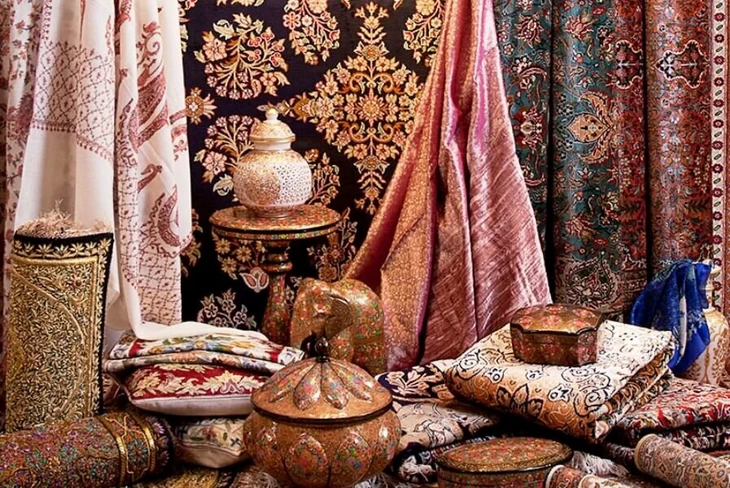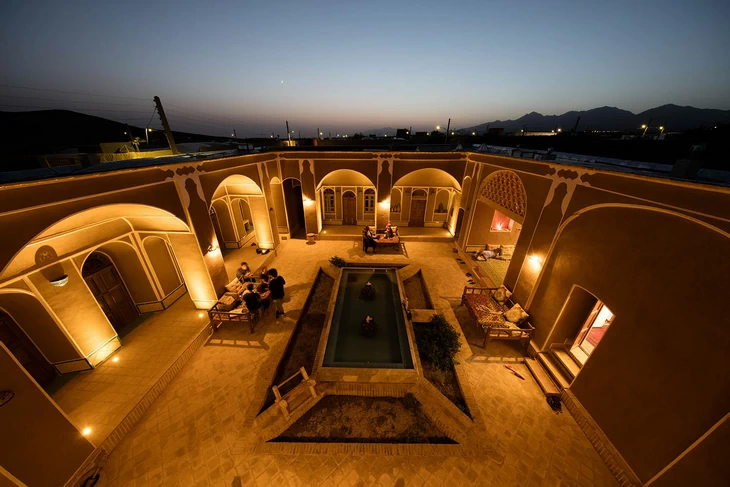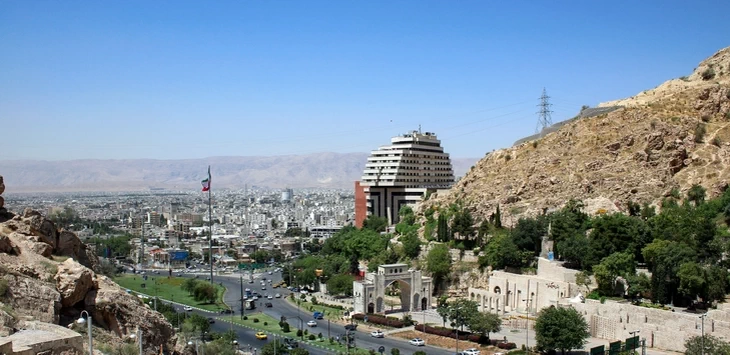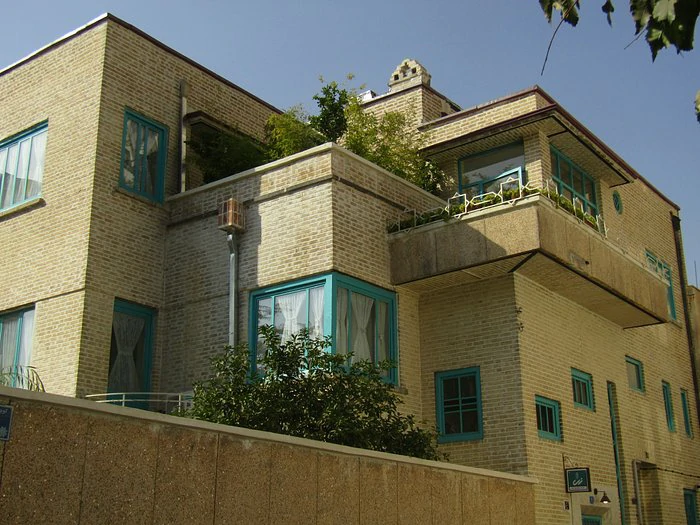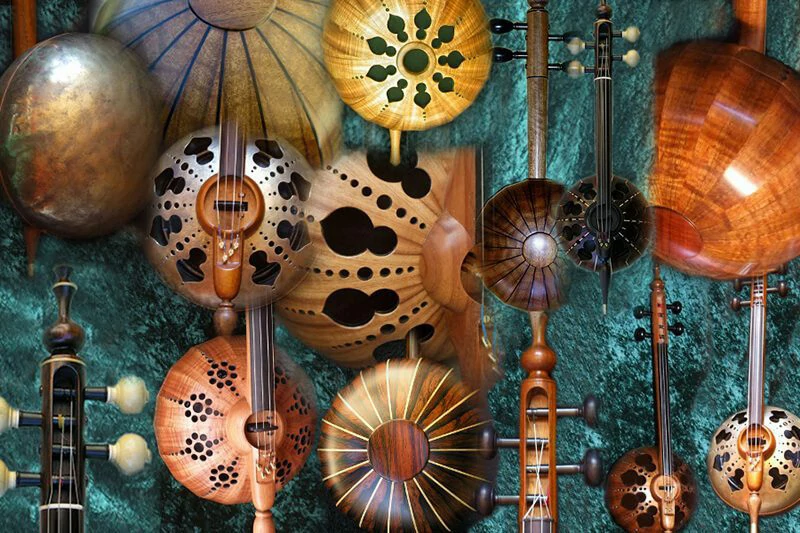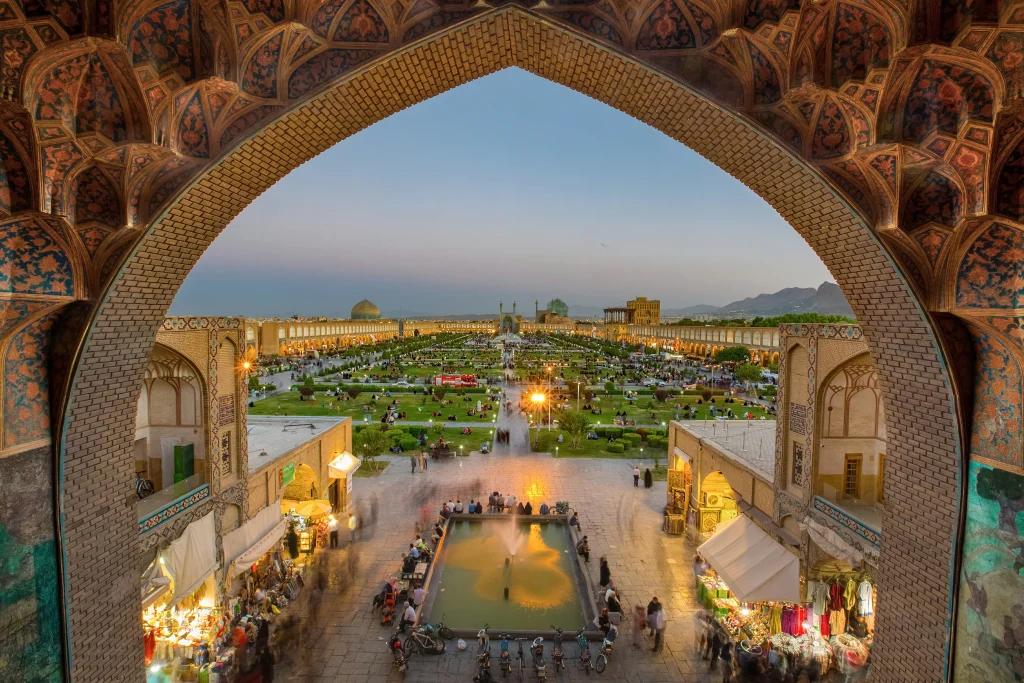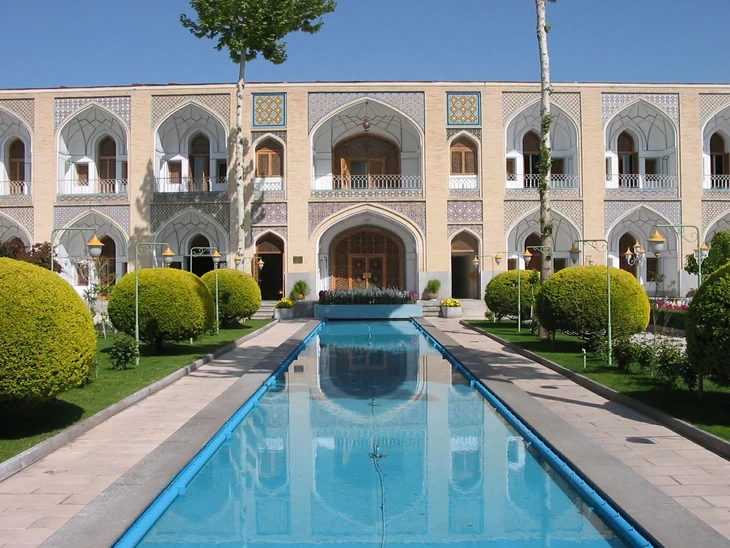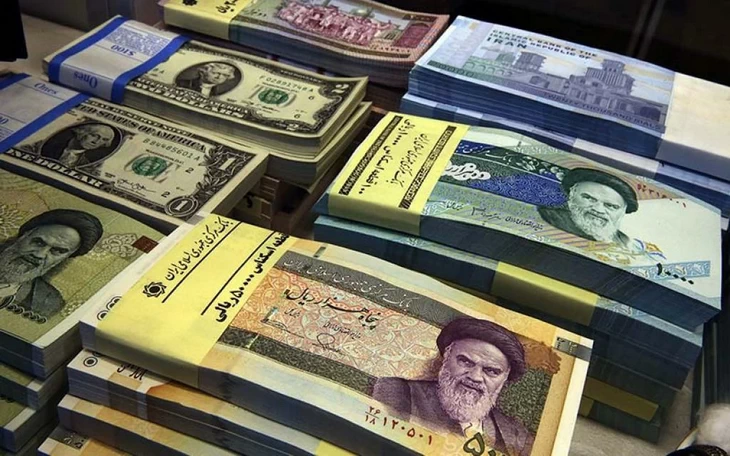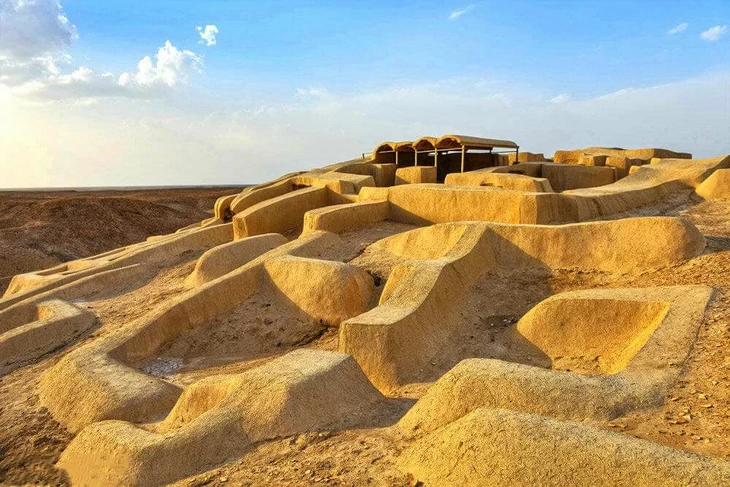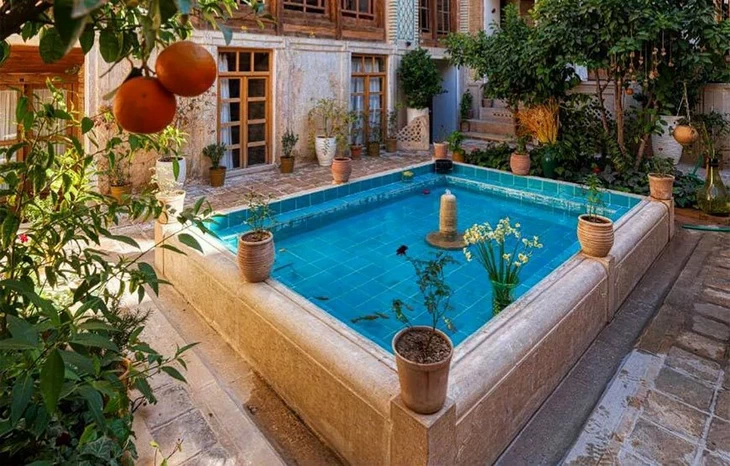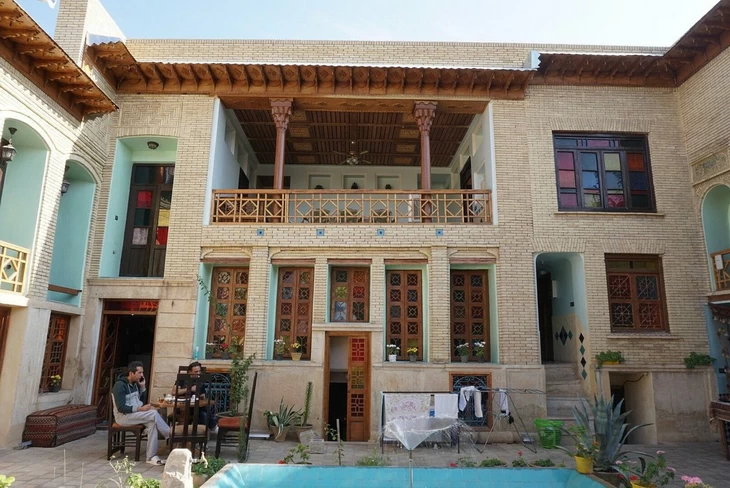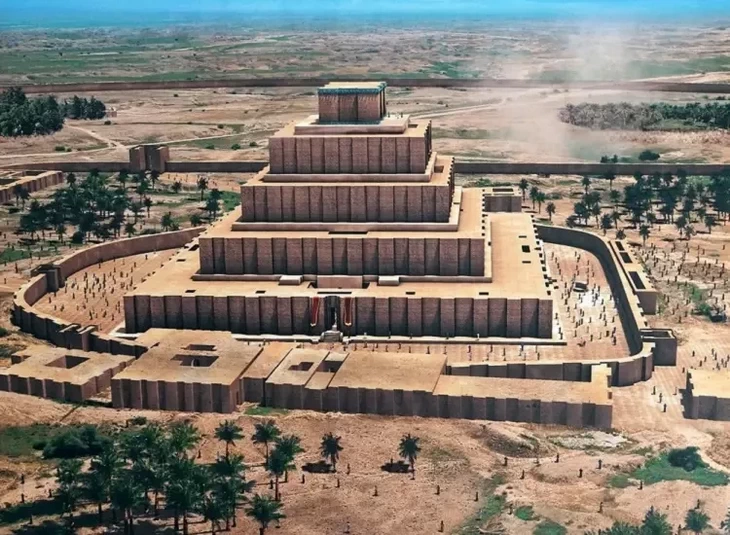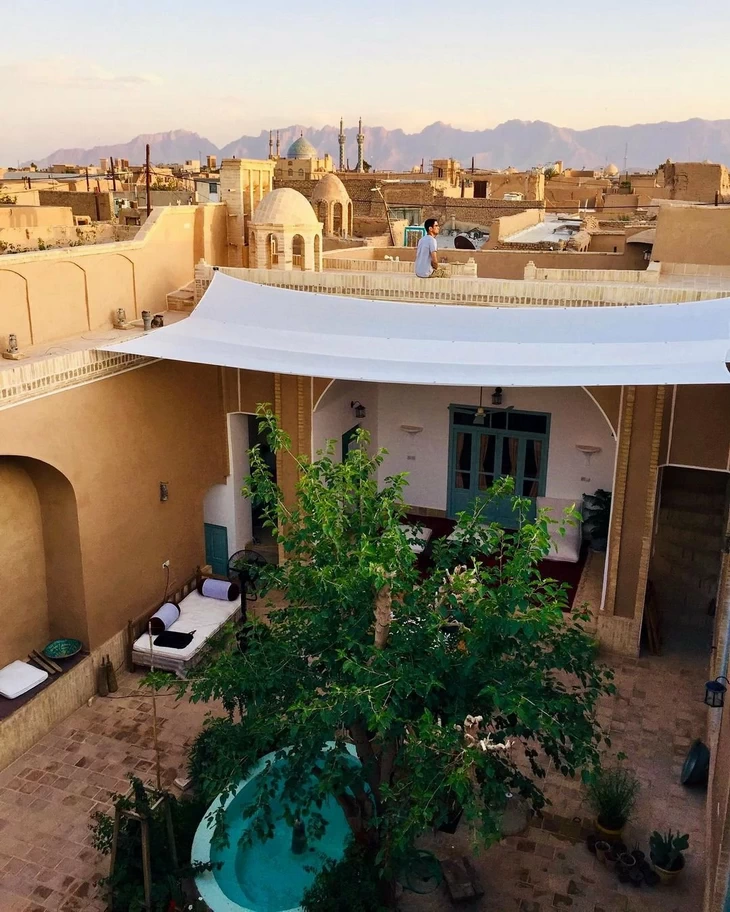Isfahan is without a doubt among the most important cities for tourists to visit during their time in Iran, but with the sometimes overwhelming amount of things to do in this fair city -from visiting the impeccable works of Safavid architecture to taking a stroll in the urban texture and buying souvenirs for the folks back home- and without the proper guidance you may realize only too late that your time in Isfahan has reached an unfulfilling end. In this blog post, we will help you make the most of your time in our city!
You can take a look at our Iran SIM Card blog in order to remove the hassle of doing a bunch of paperwork and not having access to the Internet, and just enjoy your time! Also don’t miss out on our currency guide! And if you’re still a bit confused about different parts of your Iran trip, don’t hesitate to contact us!
Isfahan Attractions
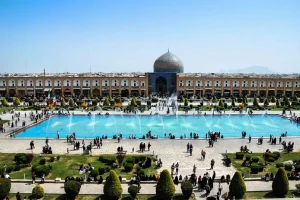
Naghshe Jahan Square
The pride and joy of the city and the finest monument to the Safavid dynasty, Naghshe Jahan Square (also known as Meydan-e-Shah or Meydan-e-Imam) is the first thing that comes to mind when we think of Isfahan. The UNESCO World Heritage Site was built by decree of Shah Abbas the Great to serve as a hub for the city -similar to the forums of ancient Rome. There are four main attractions on each side of the rectangle that is Naghshe Jahan: The expansive Shah Mosque (also known as Imam Mosque) and the smaller but more ornate Sheikh Lotfollah Mosque -two of the finest mosques in Islamic architecture, the six-story palace of Ali Qapu, and the Qeysarie Bazaar.
One shouldn’t confine Naghsh-e-Jahan to these four buildings though, the square is surrounded by shops where you can find handcrafted goods, food, and delicacies. It’s also worth your time to take a ride in the horse-drawn carriages to get a feel of the older times, but here’s a little tip: Try to visit the square early in the morning, before it’s too crowded. Perhaps only then will you be drawn in by the immeasurable charm!
Read more in our other blog!
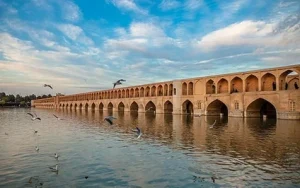
Zayandehrud and Its Bridges
One of the longest rivers in Iran, Zayandehrud literally means life-giving river. Hopefully, you’re lucky enough to visit Isfahan when the river has water, but even if not, you don’t want to miss the spectacular bridges of Zayandehrud. Si-o-se Pol Bridge (meaning thirty-three arches) has become somewhat of a symbol of Isfahan with its marvelous ornamental arches, but the simpler, more dignified Khaju bridge also has quite a lot to offer. If you’re a history nut, be sure to visit Shahrestan Bridge, the oldest river on Zayandehrud. At the end of the day, you will not be disappointed if you just take a walk alongside the river and experience the wonder of relaxing next to the symbolic mother of Isfahan.
Read more about Zayandehrud here!
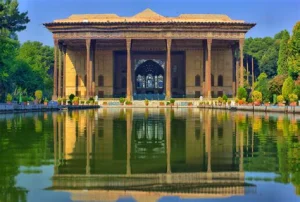
Chehel Souton Palace
The UNESCO World Heritage Site (listed in the Persian Garden section) is a vast garden and Safavid-era palace, both called Chehel Souton. There are twenty wooden columns on the front porch of the palace, doubled by their reflections in the great pool in the front (hence the name, which translates to forty columns). The palace itself now operates as a museum, housing artifacts belonging to the history of Persia. Chehel Souton also has some of the finest frescoes and interior decorations in Isfahan.
It might be worth opening a parenthesis here to explain a bit about the Persian Garden: The concept of Gardens (Pardis) was first used in the Achaemenid era, when great gardens were built with impressive palaces and watering systems to serve as oases for the royal court.
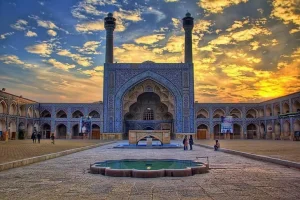
Jameh Mosque
One of the oldest mosques in Isfahan, a UNESCO World Heritage Site, and what is known as the Museum of Iranian-Islamic Architecture, Jameh Mosque is truly a sight to behold. In this building, you can pretty much see the evolution of Islamic architecture in Iran, and the many styles of Iranian architecture.
The base layout of Jameh Mosque is what is referred to as the four-courtyard style (which has roots in Sassanid architecture) and would become one the most popular layouts for building mosques in the Islamic world. The ceramic decorations, Muqarnas, and stucco work (the Jameh Mosque houses the El Jayto Altar, one of the most beautiful of its kind) used to decorate the domes, columns, and walls of the mosque are truly one of a kind.
Read more about the Jameh Mosque here!

Sabzeh Meydan
Sabzeh Meydan (also known as Meyden-e-Atiq, meaning ancient square) was Isfahan’s main hub before the construction of Naghsh-e-Jahan, all the way back to the Seljuq dynasty. As well as housing the Jameh Mosque, Sabzeh Meydan is a fascinating Seljuqi architectural site that includes Ali Mosque, and the plentitude of ancient Minarets like Ali Minaret and Chehel Dokhtaran Minaret. Don’t miss out on this ancient part of Isfahan that has perhaps been overshadowed to some extent by Naghsh-e-Jahan Square!
Chaharbagh Abbasi Street
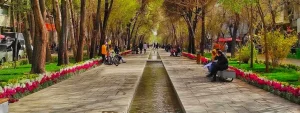
A beautiful street located in close proximity to Nagsh-e-Jahan Square and closed off to vehicles, Chaharbagh Abbasi Street is a must-see in Isfahan. Chaharbagh means four gardens, and refers to the gardens that surround the street. Originally, Madreseye Madar Shah was located on this street: a complex including a school, bazaar, and caravanserai. Nowadays, shops, malls, cafes, restaurants, and the Hasht Behesht Park flank Chaharbagh Street. If you’re looking to spend a peaceful evening in Isfahan, Chaharbagh won’t fail you. And since it’s so close to the Square, the Chehel Soutoun Palace, and the Hasht Behesht Park and Palace, you’re bound to pass through it in between your visits; why not make a day out of it?
Jolfa – The Armenian Quarters
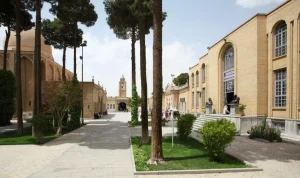
The neighborhood that is now known as Jolfa, was once the village of New Jolfa and housed a colony of Armenian Folks who moved there by decree of Shah Abbas the Great in order to benefit the Safavid Empire with their craftsmanship and skills. Jolfa is still mainly populated by Armenians, and is also home to some beautiful churches and cathedrals (the most notable one being Vank Church). The frescoes and wall paintings in some of these cathedrals are among the finest works of Christian art in Iran.
After you’re done with the historical attractions of Jolfa, be sure to come back during the evening and experience one of the best atmospheres in Isfahan. With its great cafes, fine-dining restaurants, and shops, Jolfa is one of the highly traversed destinations for locals and tourists alike.
To read more about Armenians in Isfahan and 4 more ethnicities, read our other blog! Also read about how Christmas is celebrated in Jolfa here!
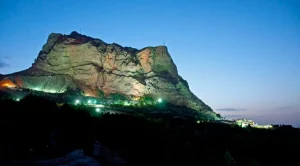
Soffeh Mountain Park
Soffeh Mountain is located in the south of Isfahan. The area around the mountain (approximately 100 hectares) has been turned into a mountain park, with valleys and springs, restaurants, a small zoo, a cable car, and the most beautiful view of the city of Isfahan. There’s a relatively easy hike to the top of the mountain, and what awaits you on top is undoubtedly rewarding, so make a stop at Soffeh if you want to see the Isfahan city lights at night!
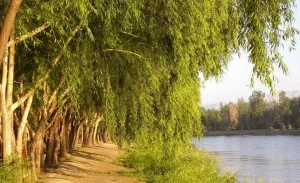
Nazhvan Forest Park
Nazhvan is a park that spans the riverside of Zayandehrud. This park is responsible for a large portion of the air filtration in Isfahan, and thus is a valuable place to the locals. Nazhvan Park has a lot of recreational facilities, making it the perfect destination for families. You can use the chairlift for a nice aerial view of the park, take a look at the reptile and bird gardens, visit Isfahan’s only aquarium, rent bicycles and boats, or go horse riding, and have a memorable day in Isfahan.
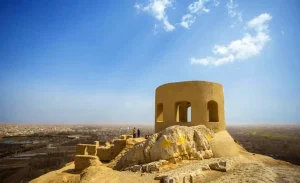
Atashgah
The Zoroastrian Fire Temple of Mehrebin (commonly referred to as Atashgah) is located approximately eight Kilometers to the west of Isfahan. The building, belonging to the Sassanid era is situated on top of a rocky mound, and while not much attention has been put into its restoration and renovation efforts, it’s certainly worth a visit. Isfahan is a city highly populated with works of Islamic art and architecture, so seeing this temple belonging to pre-Islamic Iran can offer an insightful look into the city’s history.
Read about Isfahan’s UNESCO World Heritage Sites in our other blog!
If you want to find out information about taking a tour of Isfahan, you can take a look at our other blog!
Food in Isfahan
One of the best things to do when you’re traveling is to try out local foods and delicacies. Pretty much every city in Iran has a unique dish, pastry, or confectionery good, or offers a unique spin on common dishes. Now, Isfahan has its fair share of good restaurants and cafes where you can eat to your heart’s content, but if you’re looking for more authentic ways of experiencing Isfahan, these are the dishes and delicacies that you simply must try out (keep in mind that you may not like all of them, but what is traveling if not going out of your comfort zone?):
Isfahan Traditional Kebab – Beryan:
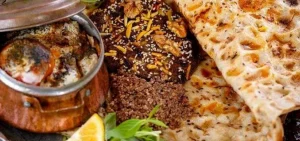
Imagine kebab, now douse it in fat. That’s Beryan for you. This dish is made with mutton and sheep lung (keep an open mind) and is served on a piece of bread. Since it’s a very heavy dish, make sure to try out Beryan at noon.
Also, check out this unique take on Beryan in our blog about veganism in Iran!
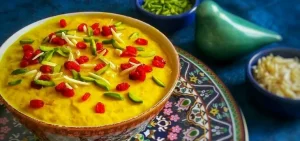
Isfahan Traditional Side Dish – Khoresht Mast:
If you’re feeling a bit sheepish about Beryan, you could always order a side of Khoresht Mast. Khoresht in Iranian cuisine is usually referred to as something similar to a stew, but Khoresht Mast is a sweet dish that is made with saffron, yogurt, sugar, and shredded meat and is usually topped with barberries and sliced nuts. Khoresht Mast is also somewhat of an acquired taste, but if you get it at the right place, you will probably enjoy it.
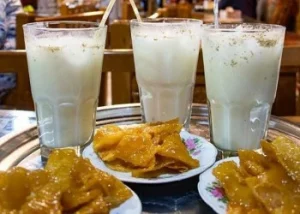
Doogh o Gooshfil:
If you thought Beryan and Khoresht Mast were strange dishes, buckle in. Doogh o Gooshfil is the combination of a popular sour Iranian yogurt-based beverage (Doogh) and a sweet fried pastry called Gooshfil (meaning elephant’s ear due to its shape). Many locals despise this combination, and many swear by it. The only choice you have is to try it out by yourself and which group you relate to.
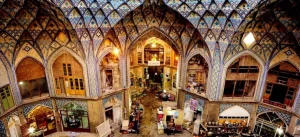
Shopping in Isfahan
Whether you’d like to experience the middle eastern charm of bazaars, or the more modern and luxurious complexes and malls, Isfahan won’t disappoint you. The enormous Isfahan City Center will give you the option to shop at big-brand stores, visit the arcade, and have dinner in the food court. However, since it’s always important to support small businesses, and since tourists usually prefer to experience the more authentic parts of the cities they visit, it might be a better idea to go to Naghsh-e-Jahan Square for most of your shopping. There you will find handcrafted souvenirs, Gaz (the local delicacy), rugs, carpets, and pretty much everything you can think of coming in varying prices and quality.
Read about one of the best Iranian souvenirs you can get in our latest blog!
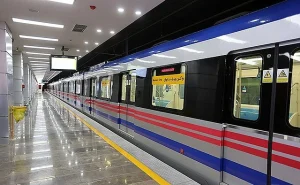
Transportation in Isfahan
Isfahan might be one of the biggest cities in Iran, but since most of the important attractions are in a highly concentrated approximation, and since the paths that connect these attractions are worth strolling through, the best option for transportation in the city is walking. Now, let’s just say that sometimes you’d like to save your energy and time in order to get the most out of your visits, and would prefer a faster, less tiring way of transportation. In that case, getting an Isfahan Card is highly recommended. You can charge your Isfahan Card with some Rials, and use it for the bus and subway systems.
The metro in Isfahan currently only covers one route from the north of the city to the south. As far as the buses, there are plenty, but as a tourist, you would certainly need someone to help you understand which bus you should get on to go to where. There is also the option of calling taxis on the street, but the language barrier might bring some unnecessary complications. Perhaps one of the best ways of transportation in Isfahan is using online taxi services like Snapp or Tap30. Do keep in mind that your place of accommodation also almost certainly provides some sort of taxi service, so don’t hesitate to get help from their front desk!
You can also use this helpful guide created by the Medical University of Isfahan to better understand the public transportation system in the city! There are of course some of you to whom this part isn’t so helpful; those of you who are Overlanders! If you’re driving through Iran, head on straight over to a blog tailored for you!
Isfahan Accommodation
Lastly, where should you stay when you come to Isfahan? You would probably like your place of accommodation to be within walking distance of important attractions, have good breakfast and affordable prices, and perhaps most importantly, you would need it to be a respite from the inevitable stress of traveling. Isfahan has plenty of good hotels, hostels, guesthouses, etc. that possess some (if not all) of the qualities you could look for. However, and at the risk of coming across as biased, you will find a home away from home in Sarv and Mahbibi hostels.
You can also read our blog ranking the best hostels in the city, or our blog about finding cheap accommodation in Isfahan so that you can choose your place of accommodation! And be sure to take a look at our blog where we talk about the lesser-known Isfahan attractions!
If you want to learn a bit more about Iran hostels in general, here are some more posts you can read!
Also read our blogs about things to do in other cities!
- Things to do in Kashan
- Kashan Hostels
- Things to do in Shiraz
- Shiraz Hostels
- Things to do in Yazd
- Yazd Hostels
- Things to do in Tehran
- Tehran Hostels

